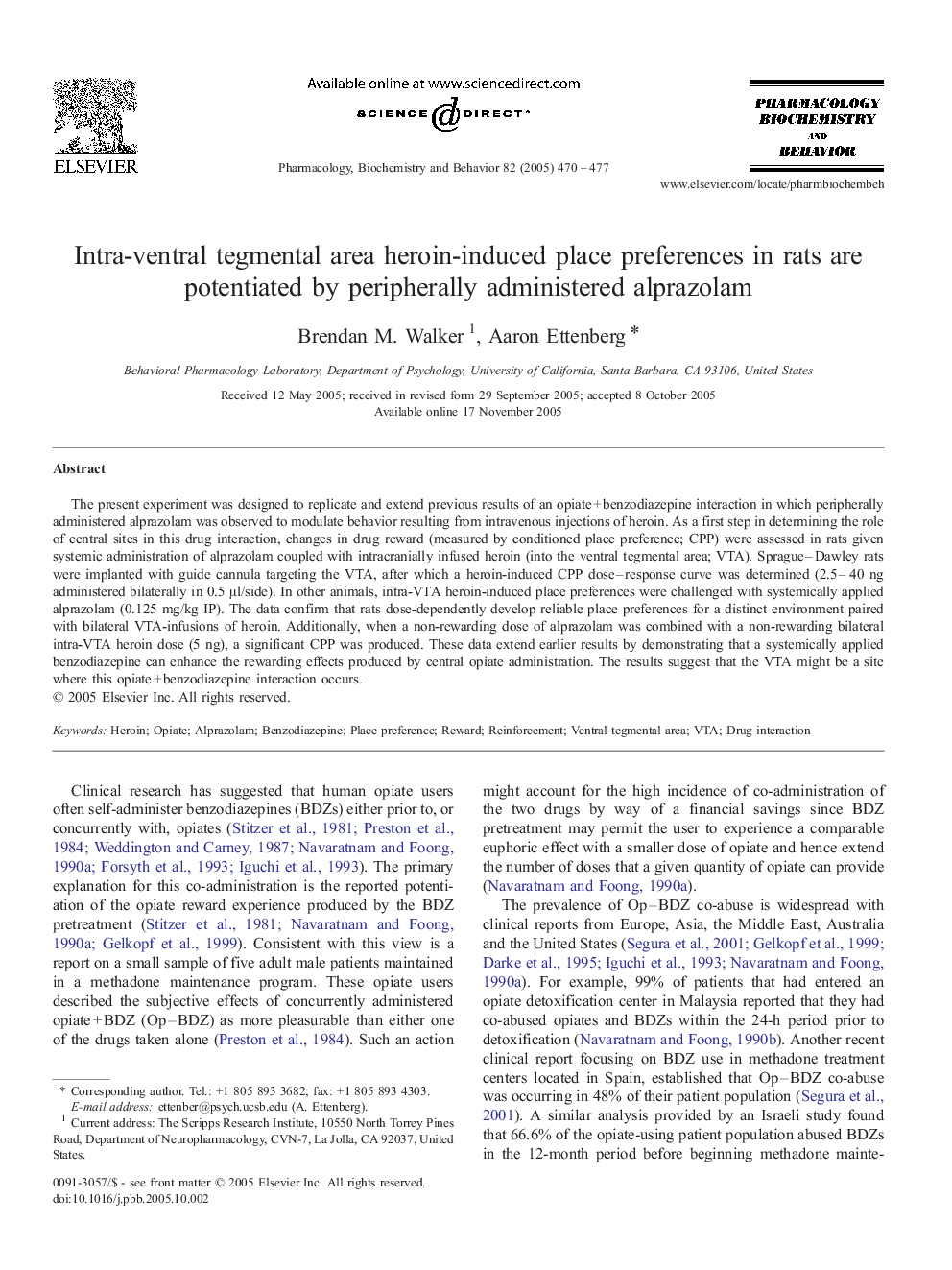| Article ID | Journal | Published Year | Pages | File Type |
|---|---|---|---|---|
| 10838337 | Pharmacology Biochemistry and Behavior | 2005 | 8 Pages |
Abstract
The present experiment was designed to replicate and extend previous results of an opiate + benzodiazepine interaction in which peripherally administered alprazolam was observed to modulate behavior resulting from intravenous injections of heroin. As a first step in determining the role of central sites in this drug interaction, changes in drug reward (measured by conditioned place preference; CPP) were assessed in rats given systemic administration of alprazolam coupled with intracranially infused heroin (into the ventral tegmental area; VTA). Sprague-Dawley rats were implanted with guide cannula targeting the VTA, after which a heroin-induced CPP dose-response curve was determined (2.5-40 ng administered bilaterally in 0.5 μl/side). In other animals, intra-VTA heroin-induced place preferences were challenged with systemically applied alprazolam (0.125 mg/kg IP). The data confirm that rats dose-dependently develop reliable place preferences for a distinct environment paired with bilateral VTA-infusions of heroin. Additionally, when a non-rewarding dose of alprazolam was combined with a non-rewarding bilateral intra-VTA heroin dose (5 ng), a significant CPP was produced. These data extend earlier results by demonstrating that a systemically applied benzodiazepine can enhance the rewarding effects produced by central opiate administration. The results suggest that the VTA might be a site where this opiate + benzodiazepine interaction occurs.
Keywords
Related Topics
Life Sciences
Biochemistry, Genetics and Molecular Biology
Biochemistry
Authors
Brendan M. Walker, Aaron Ettenberg,
